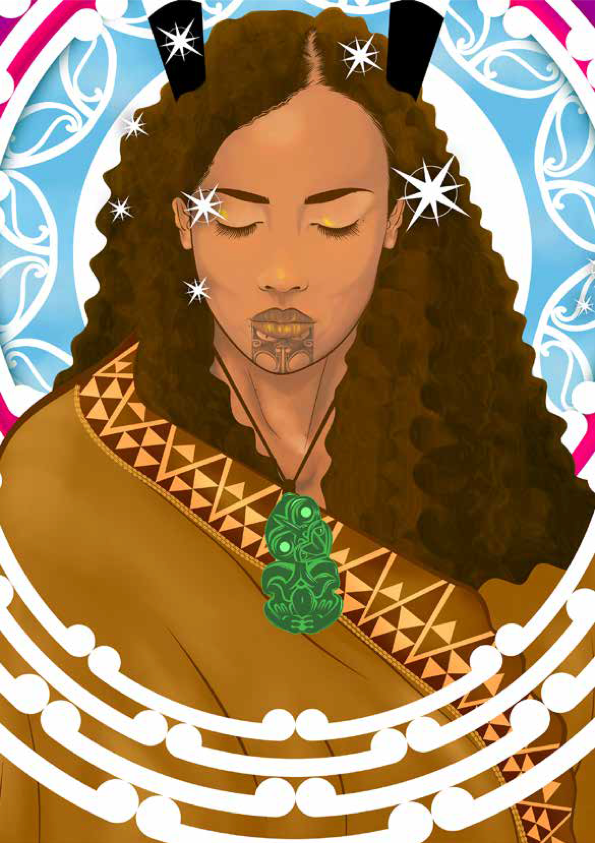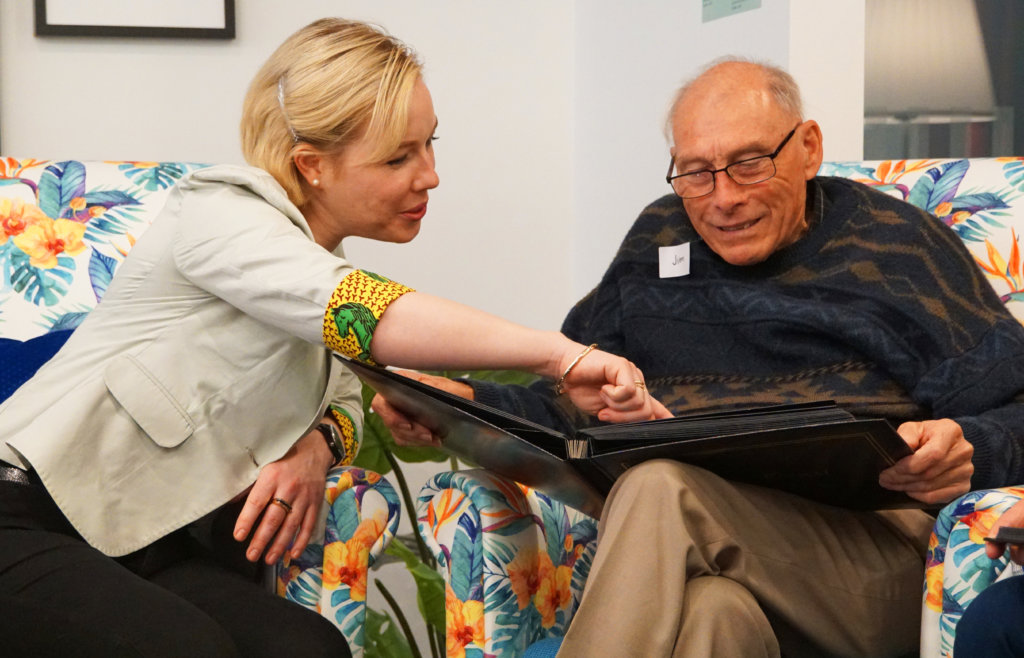2019 Gallery and Museum Achievement Awards
Engagement
Winner

Logan Art Gallery, Logan City Council
He kākano āhau (I am a seed)
The City of Logan is home to over 315,000 people from more than 215 different cultural groups. In initiating and planning this project, Logan Art Gallery was specifically seeking to engage with the local Māori community, the largest non-European community in Logan.
He kākano āhau (I am a seed) showcased contemporary Māori arts and culture at Logan Art Gallery in late 2018. It comprised an exhibition of artworks by local Māori artists; a large collaborative artwork made by Logan’s community under the guidance of artists; and complementary public programs including a cultural family fun day. He kākano āhau was the result of an extensive period of planning and consultation with local Māori community groups as well as Australian and New Zealand First Nation Elders. It formed part of a long-term strategy to highlight and celebrate the various cultural influences that richly contribute to Logan’s diverse community and to foster closer relationships between the Gallery and these cultural groups.
A major aim of this project was to build an exhibition development model, which allowed greater accessibility and ownership for diverse cultural communities. A new structure based on collaboration needed to be developed. Gallery staff saw themselves as facilitators, and not decision makers. Direction was to come from the community, and a meeting was set up where a Project Coordinator of Māori ancestry was nominated by the artists and Elders in attendance. The Coordinator was contracted by the Gallery to provide a liaison between the artists, the Māori community and the Gallery; to provide cultural advice; and to mentor the Māori artists.
The exhibition and this new, collaborative engagement model built for the project has played an integral role in how the Gallery engages with communities, reaches new audiences and fosters opportunities for inter-cultural exchange.
This project was supported by the Regional Arts Development Fund (RADF). RADF is a partnership between the Queensland Government and Logan City Council to support local arts and culture in regional Queensland.
Finalists

Queensland State Archives
The Memory Lounge
Queensland State Archives (QSA) holds the state’s memories and, through the Memory Lounge, is now helping the community share their own memories.
The Memory Lounge is a QSA initiative that delivers a program of community engagement within a purpose-built dementia-friendly space. The Memory Lounge aims to value, respect and actively engage older people in the community. The lounge area provides a comfortable and welcoming space inspired by mid-century interiors, with furnishings selected to accommodate people living with dementia.
The Archive and Dementia program commenced in the Memory Lounge in April 2019. Visitors can relax and browse through photo albums of images from the Archives, watch films from the 1950s and 60s, and share memories over morning tea. Attendees leave with a copy of a photograph to take home to continue conversations about personal memories and past experiences.
The Memory Lounge provides a social experience to share stories inspired by QSA’s collection, comprising millions of records dating back to 1823.

Moreton Bay Regional Council
Community Cultural Capacity: Curatorial Development Framework
Moreton Bay Regional Council (MBRC) is the third largest local government in Australia, and owns and operates three art galleries – Caboolture Regional Art Gallery, Redcliffe Art Gallery and Pine Rivers Art Gallery.
A key deliverable of Council’s galleries is to foster and develop the artistic practice of regionally-based artists and to contribute to creating a vibrant arts community in the Moreton Bay region. In 2016, it was identified that Council’s galleries have been exhibiting between 10–15 community groups on a regular basis, some for as long as 20 years. It was further observed that most groups don’t have the capacity to develop exhibitions; for example, curatorial skills, installation skills, logistical planning; access to promotion; exhibition and graphic design; and writing about the exhibition concept, the artists and their works.
A Curatorial Development Program (CDP) was created to enhance the capacity of these local artists and groups by detailing the curatorial process that Council’s Galleries team employs to lead out exhibitions. Through a series of meetings and feedback sessions, the team has worked collaboratively with local art groups to build skills and increase the visibility of local artists and artisans beyond the region, by ensuring that their works are exhibited to best practice standards. The CDP framework maps key milestones in an exhibition’s development and allows community art groups to actively participate in the curatorial process from start to finish.
Working within the program framework has introduced new ideas and perspectives for these exhibitions, and the long collaborative process has built trust, excitement and pride in the artists. After 18 months of collaboration and challenging their practice, the artists are ready to show their creations to their networks, building audience anticipation to engage with the artwork and the galleries.

Redland Art Gallery
From Little Things: Artist books by Robyn Foster and St James Lutheran Community Kindergarten
This collaborative exhibition between local Redlands artist Robyn Foster and children from St James Lutheran Community Kindergarten explored how kindergarten children learn to become members of the wider community outside the home.
Being part of a community gives a sense of belonging, identity, interaction, support and purpose. When thinking about how children interact with their wider community, one constant, aside from family and neighbourhood, is school.
Local Redlands Coast artist Robyn Foster chose to work with images of class photographs from the many Redlands’ schools which have helped to nurture and teach successive generations of Redlanders and provide formative education of community experience and interaction.
The works presented in the exhibition by Robyn are in the form of hanging works and artist books. They are mainly hand-drawn or cyanotype prints, some with hand stitching – mediums which were all available a century ago when the schools were being built by the local community.
As part of the Kindergarten’s current curriculum, the children are exploring how they interact with their wider community. RAG invited the children to further interact and participate with the gallery and be part of this special exhibition through workshops to help draw out their thoughts on how they see their own place in our local community.
As part of the initial stages of the project, 114 children and over 21 staff and parents from the Kindergarten undertook workshops at Redland Art Gallery, with most being a first-time visitor to the gallery. Since the project has wrapped up, increased visitation and return visits from the children and their families on weekends has opened the gallery to a wider audience.

Newstead House
Museum Theatre: The War Years – Americans at Newstead House
Built in 1846, Newstead House is the oldest standing residence in Brisbane. The War Years: Americans at Newstead brought museum theatre to Newstead House for the first time, using the House as a stage. This engaging theatre piece took audiences on a journey back to Brisbane World War II where, in 1942, over one million U.S. Servicemen are based in Brisbane and Newstead House was commandeered by the American military.
Created and delivered in partnership with Moreton Bay Environmental Education Centre, the production is a walking theatre experience with eight scenes set in a variety of rooms and locations on the Newstead House cultural and heritage precinct. Through music, dance and spoken word, the story of Marelle and Joe unfolds, taking audiences through the House and through their emotional journey. Targeting a teenage audience, it was believed that this “love” story would help students connect with the history.
The War Years: Americans at Newstead House highlights the social conditions of the time and the very real threat of war. It shows the social differences between the Americans and the Australians in simple tangible ways such as food, music, style, language, and introduces the challenges young women faced at the time when wanting to work, and what was or was not socially acceptable.
For the team behind Newstead House, the emotional connection to this story and the theatre performance confirms the belief that Newstead House must be experienced as a cultural and heritage Precinct, coming alive and engaging its audiences.

